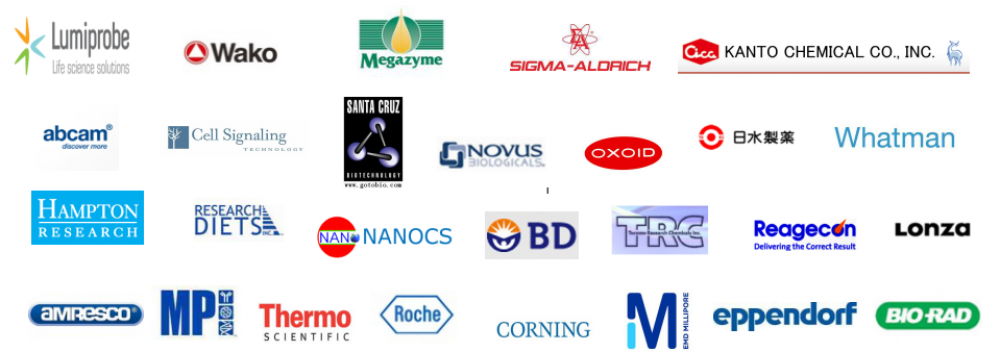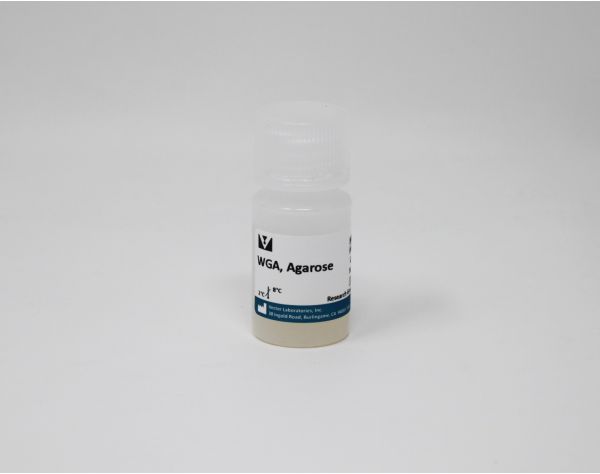Vector Labs代理,欢迎访问Vector Labs官网或者咨询我们获取相关Vector Labs产品信息以及报价。
Vector Labs 公司是世界著名的生物学检测试剂公司,七十年代其在全球首推的生物素-亲和素系统引领了生物学检测方法的重大革命,该系统被普遍视为目前最灵敏、最可靠与最有效的染色系统,并被广泛应用于免疫组织化学、免疫电镜、原位杂交与凝集素化学中。该系统仍在不断地发展,以满足广大研究人员的各种不同要求。Vector 公司还是世界上凝集素产品的主要供应商,并提供大量的新产品,如酶底物、神经元示踪剂及蛋白质、糖类与核酸的标记、分离与检测试剂。
Wheat Germ Agglutinin (WGA), Agarose bound
Description
Agarose bound Wheat germ agglutinin (WGA) is prepared using 4% agarose beads. The receptor sugar for WGA is N-acetylglucosamine, with preferential binding to dimers and trimers of this sugar. WGA can bind oligosaccharides containing terminal N-acetylglucosamine or chitobiose, structures which are common to many serum and membrane glycoproteins.
Features:
- Bead diameter ranges in size from 45-165 microns
- Matrix is stable in solutions at pH 3-11 as well as many organic solvents
- Immobilized lectins are prepared using affinity purified lectins
- Covalent attachment preserves lectin activity and minimizes conformational changes that might result in nonspecific or hydrophobic interactions
- Conjugated proteins are not leached off the beads by Tris or other routinely used buffers
- No residual charges present after conjugation. This minimizes non-specific binding to the matrix
- Product supplied as a 1:1 suspension in buffer
Specifications
| Unit Size | 2 ml, 5 ml, 10 ml |
|---|---|
| Applications | Glycobiology, Affinity Chromatography |
| Recommended Storage | 2-8 °C DO NOT FREEZE |
| Solution | 10 mM HEPES, pH 7.5, 0.15 M NaCl, 20 mM GlcNAc, 0.08% sodium azide |
| Recommended Usage | Wash gel thoroughly with buffer before use to remove sugar added to stabilize the lectin. Recommended product for eluting glycoconjugates bound to this agarose-lectin: Glycoprotein Eluting solution, Cat. No. ES-5100. Alternately, 0.5 M N-Acetyl-D-Glucosamine or Chitin Hydrolysate (Cat. No. SP-0090) can be used.For those glycoconjugates having very high affinity for WGA, it may be necessary to lower the pH of the eluting sugar solution to pH 3.0 with acetic acid. After use, wash the gel with several column volumes of buffered saline, then resuspend gel in buffered saline containing 0.08% sodium azide for storage. |
| Matrix Conjugate | Lectins |
| Sugar Specificity | N-Acetylglucosamine |
| Conjugate | Agarose |
Documents
- Safety Data Sheet
- Lectins in Histochemistry, ELISA, and Western Blot Applications
- User Guide
- Download CoA
- Datasheet
Product FAQs
I purchased an agarose bound lectin from Vector Labs. Do you have a protocol outline on how this may be applied in a column format?
What are recommended conditions for using the agarose-lectin in chromatography?
Related Products
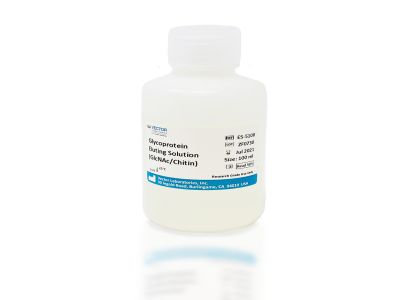
Glycoprotein Eluting Solution for GlcNAc/Chitin Binding Lectins Catalog #: ES-5100-100

Wheat Germ Agglutinin (WGA), Peroxidase Catalog #: PL-1026-2

N-acetylglucosamine Catalog #: S-9002
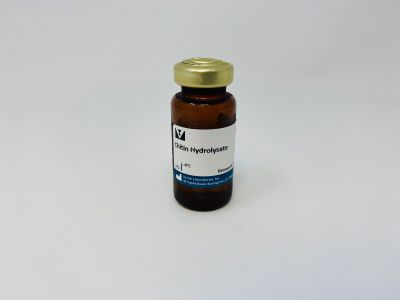
Chitin Hydrolysate Catalog #: SP-0090-10
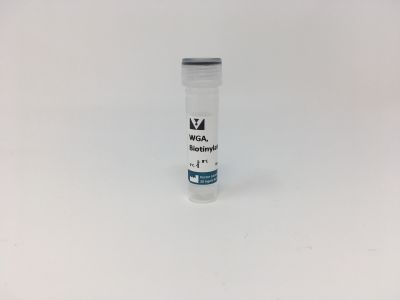
Wheat Germ Agglutinin (WGA), Biotinylated Catalog #: B-1025-5
Citations
Technical Information
Bacterial cell wall peptidoglycans, chitin, cartilage glycosaminoglycans, and glycolipids can also bind WGA. Native WGA has also been reported to interact with some glycoproteins via sialic acid residues (see succinylated WGA). This lectin is used for the purification of insulin receptors and for neuronal tracing.
Agarose bound* WGA is prepared using our affinity-purified lectins. Heat stable, cross-linked 4% agarose beads with a molecular weight exclusion limit of about 2x107 daltons are used as the solid-phase matrix to which the lectins are covalently coupled. The attachment of the lectins to the beads is carefully controlled to preserve lectin activity and minimize conformational changes of the bound lectins that might result in nonspecific ionic or hydrophobic interactions. The technique we have developed to couple lectins to agarose beads inserts a hydrophilic spacer arm between the lectin and the matrix.
This coupling method provides several advantages over the traditional cyanogen bromide procedure:
- Maximum carbohydrate binding activity of the coupled lectins is retained
- Linkage is stable over a range of pH values
- Conjugated proteins are not leached off the beads by Tris or other routinely used buffers
- No residual charges are present after conjugation. This minimizes non-specific binding to the matrix.
Our agarose bound lectins are supplied at a constant concentration of lectin per ml of settled beads. The concentration for each lectin is selected to achieve the highest glycoconjugate binding capacity per mg of lectin present in the beads. Each lot is tested for its binding capacity using glycoproteins known to bind the lectin. This provides a guideline for the user and assures the quality of our agarose bound lectins.
Inhibiting/Eluting Sugar: Chitin Hydrolysate or 500 mM N-acetylglucosamine with salt and/or acid elution generally required
*5 mg lectin/ml gel
